

European
Nuclear Society
e-news
Issue 24 May 2009
Outside the sun is shining brightly. The temperature is a lovely 18°c and the sky is cloudless – not bad at all for April in Brussels. That first genuinely warm sunshine of the year usually helps to banish any lingering symptoms of “seasonal affective disorder“ (sad) and summon up that primeval feel good factor that comes with the arrival of spring. Or, to put it more scientifically, a sudden rush of endorphins is released from the pituitary gland and hypothalamus, deep in the human brain, to make us feel happy and energised.
The frenetic fertility and creativity of spring always creates the impression that something new and exciting is going to happen at any moment. Russian author Vladimir Nabokov referred to spring as:”…something trembling on the brink of something else.” From the nuclear community’s perspective there is certainly anticipation in the air. There is a tangible sense that we are on the verge of something new and exciting; something that will give fresh impetus to the nuclear revival and make it sustainable. For many of us the exciting research that is being carried out, for example, into high and very high temperature reactors, the hydrogen economy, new medical therapies and the growing range of alternative non-electrical applications of nuclear energy, is our daily bread.
But that research has been carrying on for some time now, through good times and bad. So is the current positive hype fully justified? Well, times have changed. Nuclear energy is no longer the pariah it once was, afflicted by taboo status. It has reassumed its rightful place at the top of the European energy policy agenda. Ambitious new build projects have been launched across Europe. Even countries with long-established nuclear bans, like Italy and Sweden, are revisiting the nuclear option. Its heightened credibility, thanks largely to its recognised climate change and security of supply credentials, has provided many researchers with a more favourable context and environment within which to work. People are more prepared to listen to the nuclear case today than they have been for years and, consequently, research is more a focus of attention than before. There is also, of course, a greater demand for results; a greater responsibility to exploit the current revival and transfer that research to the marketplace. This is hardly surprising as greater anticipation goes hand in hand with greater perceived opportunity. Can we afford to let the current positive climate go to waste? What can we do to ensure that it doesn’t?
Naturally, the nuclear revival does not necessarily mean that everything is rosy in the research garden. The benefits it brings can take a long time to filter through to grass root research programmes. Not all areas of research enjoy the same degree or pace of support; the same visibility. Then there is the perennial problem of increasing and sustaining funding, only this time it has added significance because of the global financial crisis. Positive words and encouraging signs count for little if the money isn’t there. In some countries a persistent lack of political will and vision can undermine progress even when the conditions for it are favoruable.
So, are researchers experiencing a lasting nuclear spring, or is it just a temporary seasonal phenomenon? Perhaps it’s just me experiencing an endorphin rush as I contemplate spring from my office window? What do you think? Send ENS NEWS your personal testimony of what it is like working at the research front line today. To what extent – if any – do you feel that your work and working environment have improved compared to a few years ago - when talk of an impending nuclear revival seemed like pie in the sky? A lot of talented young scientists and future scientists considering a career in nuclear research would be very interested to read what you have to say. So too, I’m sure, would all of our readers.
ENS NEWS N° 24 kicks off with a Word from our President piece that focuses on what are busy and exciting times for the nuclear industry in the UK. The British government’s newly-created Department for Energy and Climate Change (DECC) now brings together parts of the environment and industry departments, underlining the synergy of energy and environmental policy. DECC recently announced that eleven potential sites for the building of new reactors had been identified. Meanwhile, the Nuclear Decommissioning Authority has announced the winners of the auction to purchase the NDA land that has been set aside for the building of the new power plants. The UK really is a hive of activity at the moment.
Andrew Teller explores how the critics of nuclear energy, whether deliberately or in good faith, often forget to apply good old-fashioned logic to their analyses, which invariably leads to biased, simplistic and uncorroborated statements.
The ENS Events section focuses on some heavyweight ENS conferences that have just taken place or are looming large on the horizon. These include PIME 2009 (the international conference for nuclear communicators that took place in Edinburgh from 15 - 18 February); RRFM 2009 (Vienna, 22 – 25 March) and ETRAP (the international conference on Education and Training in Radiological Protection), which will take place from 8 - 11 November 2009, in Lisbon.
In the packed Member Societies and Corporate Members section a series of reports focuses, among other things, on the compatibility of nuclear energy and environmental protection, the past and present of nuclear energy in Italy and a review by the Revue Générale du Nucléaire of a new book that highlights the facts and especially fiction that were presented by the French media in the aftermath of the Chernobyl disaster.
The Young Generation Network has been especially active of late. The YGN Report section this time includes a personal reflection on the PIME 2009 conference in Edinburgh, followed by news of the first meeting of the ENS YGN network and a report on that perennially successful ENS stalwart conference, RRFM 2009.
In this edition’s European Institutions section, readers are given advance "warning" of the upcoming 9th Joint Workshop on Management Systems, which will be co-hosted by the IAEA and FORATOM from 23 – 25 June 2009.
Casting its net wider, the ENS World News column features a selection of some of the most interesting recent news items from our friends at NucNet, reference to ENS- sponsored conferences and the first mention of the fact that 2011 has been named as the “International Year of Chemistry” (watch this space).
I hope that you enjoy reading ENS NEWS N° 24 and that it will contribute to that seasonal endorphin rush.
|
|
http://www.euronuclear.org/e-news/e-news-24/presidents-contribution.htm


Yesterday the UK's Nuclear Decommissioning Authority (the NDA) announced the winners in its auction of land that can be used to build new nuclear power stations. This is a very important step in the process but not, of course, the last step. There is a very long way to go before the UK can expect the first electricity from that first new station.
On hearing the news I thought it might be a good time to reflect on the nuclear scene in the UK.
Much has changed in the past few years and the rate of change seems to be increasing. The first major change I will highlight occurred on 1 April 2005 when the NDA was formed. It is a Government organisation that took ownership of the nuclear sites with an historic legacy of waste and facilities that need to be decommissioned. This is a major task that will cost many billions of pounds over many decades. The formation of the NDA indicated to the industry and public alike that the UK is serious about dealing with this legacy.
Subsequently, the UK Government carried out a review of energy policy and concluded that nuclear, together with energy efficiency and renewables, has a key role to play in moving the UK towards a low carbon economy. It was made very clear that new nuclear power plant projects would receive no government subsidy or funding.
In order to drive progress, a number of further steps have been taken by Government. A new department of state, the Department for Energy and Climate Change (DECC) was created bringing together parts of the environment and industry departments. DECC formed an Office for Nuclear Development specifically charged with finding ways to unblock any inter-departmental difficulties that might arise.
Government recognise their key role in appointing an independent nuclear safety regulator (the NII). The NII have permission to recruit more staff to meet future needs and have updated their processes recognising that new reactors will have been licensed in other countries prior to being built in the UK. They are currently assessing two reactor designs (Areva's EPR and Westinghouse's AP1000) in a "Generic Design Assessment".
Finally, the Government have recognised that the UK's planning processes were inappropriate for large infrastructure projects leading to very long delays in airport, road, rail, etc improvements. New planning legislation has been put in place for strategically important projects, including nuclear projects, that aims to retain democratic accountability while allowing more predictable timelines for investors.
All of these changes give confidence that the UK is serious about building a new generation of nuclear power plants.
This signal has been picked up by European utilities. EdF bought British Energy, the owners and operators of the AGR stations. They have announced their intention to build EPR stations on some of these existing sites. Many other utilities have shown significant interest in developing proposals to build new nuclear stations. RWE and EoN have formed a consortium that has been successful in the NDA land auction and so will now be able to move forward with developing their project proposals.
But to me the most surprising of all the developments in the UK is the fact that all of this nuclear progress has taken place with almost universal support from the media. Quite rightly the media frequently stresses the importance of dealing with the waste and ensuring that safety and security is maintained but nuclear power is now firmly recognised as part of the low carbon solution. It has been a long struggle to get our message heard and we must not take this success for granted. Provided we continue to listen to our stakeholders and treat them with respect then I see a strong and exciting future for the nuclear industry in the UK.
http://www.euronuclear.org/e-news/e-news-24/listening.htm


The conclusion of my previous column (no 23 – Winter 2009 issue) introduced a question which was left for examination in this issue of ENS News. Reflecting on the failure of umpteen critics of nuclear energy to take proper account of the intermittency of wind-generated electricity, I asked why such critics are often found overlooking this factor, since it severely, if not fatally, weakens their demonstration that nuclear energy can be easily dispensed with.
Let us ignore the case of those who deliberately brush inconvenient arguments under the carpet so as to concentrate on those who overlook important factors in perfectly good faith. In this context, one is entitled to ask why so many people are not more careful in the fact-gathering phase of their enquiries. My answer to this question is somewhat speculative but I submit that it is worth considering. As it happens, it draws its substance from the province of logic.
We must first recall that nobody enters the nuclear debate with a completely neutral position (my apologies to those who think I’m stating the obvious). When people start making their case, they already know where they are heading to. Let us therefore consider someone whose investigations are influenced by the general feeling that “all Nuclear Power Plants are Bad” or even “all things Nuclear are Bad”, where Bad stands for dangerous, useless, too expensive, you name it. Using N and B as shorthand for the two parts of the sentences separated by “are”, the logical structure of the above-mentioned statement is: “all N are B”. Let us now call non-N and non-B1 the negation of N and B respectively;
I submit that hasty critics of nuclear energy behave AS IF “all N are B” allowed them to conclude that “all non-N are non-B”.
But such derivation is not correct, as can be seen from figure 1 which illustrates the statements in terms of set theory. In this figure, U is the universe of all sets, containing sets N and B in particular. Set N is assumed by the opponents to nuclear energy to be completely enclosed in set B, which provides the framework needed to ensure that all N are effectively B. Their task then is to ascertain whether the sets so defined do indeed contain elements. As a matter of fact, they are quite happy to point out instances of elements such as (a) (e.g. Chernobyl, Three Mile Island) as a confirmation of the validity of their model. But even if we granted them that nuclear energy cannot be good, it would not allow them to jump to the conclusion that all substitute energy sources (non-N elements) will be such as (c), i.e. devoid of defects (non-B). At least some non-N elements could be such as (b) that is at the same time non-N and B, which confirms that the statement “all non-N are non-B” cannot be deduced from the statement “all N are B”.
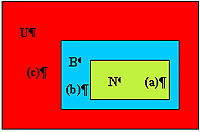 Figure 1 |
|
It is of interest to note that the only statement that can be validly deduced from “all N are B” is “all non-B are non-N”, which looks like, but is not the same as, “all non-N are non-B”. The correct derivation expresses the law of contraposition. It can be verified on figure 1 that “all non-B are non-N” refers to the fact that the red region (non-B) is enclosed in the red + blue region (non-N), which can only happen if the yellow region is enclosed in the blue one, i.e. if “all N are B” is true. The only case when “all non-N are non-B” is equivalent to “all non-B are non-N” is when set N and set B are identical. Each and every energy source having its own shortcoming, it is not allowed to assume that these two sets are identical
At the end of the day, three things are needed to reach valid conclusions: a) a set model general enough to handle all possible cases (something like figure 2), b) valid logical derivations and c) proper sampling of the contents of the sets underlying one’s reasoning.
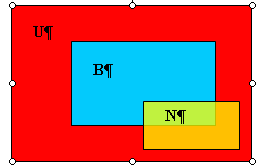
Figure 2
Proper sampling in particular requires that not all attention be devoted to the N set, but that part of it be paid to the non-N part of the model. This is what is routinely dispensed with by hasty critics of nuclear energy. If they had done their homework properly, they would have found out that their proposals all too often fall in the (b) category, and not in the (c) one. Two examples will confirm this conclusion. First, the 2005 Wind Report (available from www.eon-netz.com) underlines the almost negligible contribution of wind machines to guaranteed capacity. It must be noted that this conclusion comes not from an advocate of nuclear energy like me, but from E.ON, a major German utility with a big fleet of wind machines. Second, biofuels that had been touted as an alternative to CO2-emitting fuels now appear to be much less environment-friendly than thought until recently, as reported in a recent issue of The Economist (Biofools, April 11th-17th 2009). In summary, biofuels appear to generate N2O, another greenhouse gas, in quantities sufficient to at least offset the CO2 savings expected. Both undertakings, excessive targets for wind power and biofuels, come to be seen as misallocations of precious resources only made easier by the unwarranted jump from “all that is nuclear is bad” to “all that is non-nuclear is good”.
A lot of discipline is required in order to reach robust conclusions: it is all well and good to pile up arguments against one’s opponent’s views; one must also have the courage of taking a hard look at one’s own preferences. The somewhat unexpected conclusion of all this is that nuclear does not even need to be good to get recognition; all that is needed for it, is not to be worse than the alternatives proposed.
http://www.euronuclear.org/e-news/e-news-24/etrap2009.htm


The Instituto Tecnológico e Nuclear and the European Nuclear Society are organising the 4rd international conference on education and training in radiological protection, ETRAP2009, in Lisbon from 8 - 11 November 2009.
Education and training are the two basic pillars of any policy regarding safety in the workplace. Practitioners who work with radiation sources will have a wide range of responsibilities and objectives depending on the radiation practice, but all will have a triple common need:
A basic education as well as specific training providing the required level of understanding of artificial and natural radiation and its management,
Standards for the recognition of skills and experience,
An opportunity to refresh, update and test acquired knowledge and competence on a regular basis.
International meetings, publications and recommendations covering safety culture in the field of radiological protection increasingly stress the need for education and training. In addition, compliance with the requirements of specific European directives and the international basic safety standards is crucial in a world of dynamic markets and increasing workers’ mobility, and common approaches to training facilitate the understanding of these requirements.
ETRAP2009 intends to provide the necessary platform for a comprehensive and transdisciplinary approach to education and training in radiological protection.
The ETRAP2009 Programme Committee is calling for presentations in the following topics:
Developments in training delivery (distance learning, demo-installations, competence assessment ….)
Approaches in sector specific training (in-house training, specific training in industry and in medicine, NDT, on-the-job training…)
Recent developments in recognition and harmonisation of requirements (European and International safety and training standards, certifications, accreditation…)
Education and Training networks (local, national, international)
Building the future – attracting a new generation (information at all educational levels, examples of materials, knowledge transfer…)
Broadening the perspective
Integration of RP into a general health and safety training (risk assessment, safety culture, RP requirements in transport of dangerous goods, waste management, mining, NORM…)
Importance of non-technical skills (communication skills, transdisciplinary approaches, ...
The conference intends to address the largest possible audience, covering policy-makers, the medical sector, industrial radiographers, NORM experts, the engineering sector, the non-nuclear industry, social sciences researchers, safety experts, radiation protection experts, radiation protection officers, medical physics experts, regulators and authorities. Furthermore, it aims to reinforce the contacts between various organisations, individuals and networks dealing with education and training policies in radiological protection. Special attention will also be paid to attracting and inviting young professionals to ensure knowledge transfer and to help build the future of radiological protection.
Upload your abstracts before 29 May 2009 on the |
Authors should submit their abstract text in English(400-words) by: 29 May 2009 Full paper submission deadline: 9 October 2009. Email ALL correspondence to etrap2009@euronuclear.org. Your abstract contribution
will be included in the Conference Proceedings
(Transactions) that
will be available on CD-ROM (after the conference) and posted on our website: www.euronuclear.org with reference ISBN 978-92-95064-08-9. |
Chair:
Ms Coeck, Michèle, SCK•CEN
Members:
Mr Bazargan-Sabet, Behrooz, Ecoles des Mines
Mr Draaisma, Folkert, NRG
Mr Gonçalves Marques, Joaquim, ITN
Mr Jouve, André, EC DG RTD
Mr Mundigl, Stefan, EC DG TREN
Mr Paynter, Richard, HPA
Ms Schmitt-Hannig, Annemarie, BfS
Mr van der Putten, Wil, EFOMP
Mr Vaz, Pedro, ITN
Mr Vekic, Branko, IRB
Mr. Wheatley, John,
IAEA
Conference Secretariat:
European Nuclear
Society
65 Rue Belliard
1040
Tel. +32 2 505
30 54
Fax +32 2 505 39 02
http://www.euronuclear.org/e-news/e-news-24/enc2010.htm


Call for Papers
The European Nuclear
Conference (ENC) is the largest international conference of its kind on
the European event calendar. This European Nuclear Society (ENS) event
has a multidisciplinary approach, looking at nuclear applications in
energy production and medical technologies.
ENS
and the ENC 2010 Programme Committee are now calling for abstracts in the
following areas:
Reactor technologies
Generation III reactors
Generation IV reactors
Small reactors
Research reactors
Innovative reactor concepts, including the thorium cycle
Innovations in the supply chain or construction engineering
The fuel cycle
Front end
In core management and fuel behaviour
Back end
Spent fuel management
Uranium and plutonium recycling, including minor actinides transmutation
Transports of fuel materials
Nuclear materials safeguards
Greenhouse gas emissions from the fuel cycle
Plant operations
Maintenance and operation
Safety management (operation, maintenance, aging …)
Human and organizational factors
Materials technology and testing
Plant life extension
Instrumentation
Decommissioning
Physical protection
Life science applications
Protection of man and the environment
Radiobiology/radioecology
Instrumentation
Diagnostic and therapeutic applications
Isotopes supply
Radiation protection in medical applications
European harmonisation issues
Therapy with alpha emitters
...
Nuclear medicine training in Europe, present and future trends
Education, training and knowledge management
Initiatives in education, training and knowledge management
Education & training facilities
Challenges and opportunities for nuclear professionals
Recruitment and labour market issues
Nuclear and civil society
Countries’ perspectives on nuclear energy policy
Public information, including communicating on nuclear incidents
Public perception
Stakeholder involvement
Economical impact
Nuclear and the societal debates, including at international fora
Upload your abstracts before 2 October 2009 on www.enc2010.org or |
Important dates Deadline for
abstract submission: 2 October 2009
Notification of authors:
29 January 2010
Deadline for
full paper submission: 30 April 2010
Deadline for
submission of PowerPoint presentations: 21 May 2010
Conference: 30
May – 3 June 2010
Accepted
and presented papers will be included in the Conference Proceedings
(Transactions) that will be available on CD-ROM (after the conference)
and posted on our website: www.euronuclear.org with reference ISBN
978-92-95064-09-6.
|
Abstract review
The abstracts received will be peer reviewed under the auspices of the ENC 2010 Programme Committee.
ENC 2010 Programme Committee
Chair:
Prof F. Deconinck, SCK-CEN,
ENS Past President |
65 Rue Belliard
1040
Tel. +32 2 505
30 54
Fax +32 2 505 39 02
enc2010@euronuclear.org
www.enc2010.org
http://www.euronuclear.org/e-news/e-news-24/pime2009.htm


PIME 2009, now in its twenty-first year, is a well-established fixture on the international conference calendar that has really come of age. It is totally geared to meeting the needs of communicators active in all sections of the nuclear community. Experience sharing, focused debate and, above all, practical and results-oriented communications are the name of the game. Around 150 nuclear communicators from across the world gathered for PIME 2009 in Edinburgh, from 15-18 February, to focus on real communications issues, real tools and real solutions.
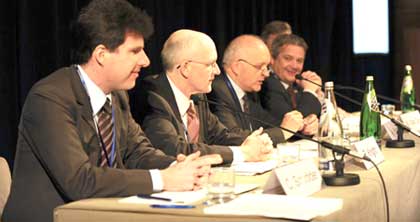
The PIME 2009 programme revolved around three main plenary topics: making increasing public acceptance sustainable, managing a crisis (with special emphasis on the IAEA’s work with the INES scale) and the course of nuclear new-build in the UK. In addition, there were a number of workshops, keynote presentations on specific topics like what advertising can teach us, break-out sessions and poster exhibitions.
As usual, PIME had an impressive array of top-level speakers on hand, including public opinion analysts, advertising gurus, representatives of industry, research leaders and senior officials from the European Commission. In his welcome speech the UK government’s Minister for Scotland, Jim Murphy communicated the vision of a nuclear tomorrow in Britain clearly and unequivocally. Among the speakers of PIME 2009 were furthermore Robert Knight, Research Director of the leading public opinion analysis company, IPSOS Mori; Michel-Hubert Jamard, Director of Communications, Nuclear Division, AREVA; Kris van Dijck, Mayor of Dessel, in Belgium and Marc Michils, CEO of Saatchi and Saatchi.
The organisers brought in a number of new programme ideas that gave it a fresh and more innovative look. An innovation on the programme this year was the opportunity given to the short-listed candidates for the 2009 PIME Award for Communications Excellence to briefly present their campaigns in plenary and to lobby support from their peers. It was those fellow communications specialists who would later cast their votes. This year’s award was won by the Belgian Nuclear Forum for the first-ever extensive nuclear public advertising campaign to be run in Belgium. It used a broad range of tools, techniques and media to open a dialogue with the Belgian public and invite citizens to make up their own minds. It was all about pro-actively addressing the public and making politicians reconsider Belgium’s nuclear phase-out policy.

A new approach to focusing on diverse issues and needs of PIME delegates was based on the “open space” concept that has gained popularity at conferences in recent times. Delegates posted their choice of topic for discussion on an agenda board and fellow communicators with a common interest in a particular topic or problem gravitated together and spontaneously discussed that topic with their fellow professionals. Among the subjects that were identified and debated were “How to communicate better to young people and women,” How to manage effectively an online debate” and “How to build trust after a serious accident.”
After a morning devoted to discussions on the subject of crisis communications, the workshops on Day 2 then concentrated on other topics of perennial interest to nuclear communicators: communicating waste management, the transportation of radioactive materials (organised by the World Nuclear Transport Institute, WNTI) and a Women in Nuclear (WIN) session on engaging the public with high-impact messages. Each workshop leader then reported in plenary on what was discussed during his/her session.
Finally, after much debate and networking, Santiago San Antonio, Secretary General of ENS, announced that PIME 2010 will take place in Budapest.
For more information about the PIME2009 programme, the speakers and the winning campaign for the PIME Award for Communications Excellence go to: www.pime2009.org.
PIME delegates can also view copies of all the presentations on the Pime 2009 website.
http://www.euronuclear.org/e-news/e-news-24/rrfm2009.htm


The 13th annual topical meeting on Research Reactor Fuel Management (RRFM) took place from 22 - 25 March 2009 in Vienna, Austria.
25 Mar (NucNet): Experts from more than 30 countries have been meeting in Vienna, Austria to discuss critical issues facing research reactor fuel management.
The head of the International Atomic Energy Agency’s (IAEA) research reactor group Pablo Adelfang said of the 13th International Topical Meeting on Research Reactor Fuel Management*: “The main issue during this conference is the development of very high density low-enriched uranium (LEU) fuel, as well as the conversion of the most demanding high-flux research reactors to use LEU instead of highly enriched uranium."
Participants also discussed back-end solutions for spent fuel – such as transportation, final disposal and reprocessing – and shortages of the medical isotope technetium-99m (Tc-99m).
The director-general of the Nuclear Energy Agency, Luis Echávarri, said: “Ninety-five percent of the world’s needs are supplied by only five reactors, all of them over 40 years old. Outages of these reactors and of the downstream processing facilities have recently resulted in significant shortages of Tc-99m.”
*The four-day conference that ends today was organised by the European Nuclear Society in cooperation with the IAEA. Details are available on the IAEA’s web site (http://www.iaea.org).
>>Related reports in the NucNet database (available to subscribers)
Australia’s Opal Back In Operation As IAEA Warns Of Isotope Supply Problems (News No. 90, 10 November 2008)
NRG Gets Permission To Restart Petten Research Reactor (World Nuclear Review No. 7, 13 February 2009)
The NucNet database currently contains more than 13,000 reports published since 1991. To subscribe or ask for any further information email info@worldnuclear.org
Source: NucNet
Editor: editors@worldnuclear.org
-------------
24 March 2009
This week 230 experts from over 30 countries gather in Vienna, Austria to discuss the most critical issues facing research reactor fuel management.
Operators of the world´s 250 working research reactors are discussing the use of highly enriched uranium (HEU) as well as conversion of research reactors to use different fuel. The use of HEU poses a global nuclear proliferation and security risk because it can be used to make nuclear explosives.
http://www.euronuclear.org/e-news/e-news-24/nuclear-energy.htm

On 27 January, Corinne Lepage, a former French environment minister and Vice President of the French centrist party “MODEM,” wrote an article in the monthly newsletter of the SFEN, Bulletin SFEN. The central thesis of the article is that the building of more EPR reactors in France is diametrically opposed not only to the goals of France’s environmental “Grenelle” (the national environmental action plan that was agreed upon following a lengthy stakeholder consultation process), but also to the EU’s environmental goals as a whole. Consequently, Mrs. Lepage argues, further nuclear new build in France would spell disaster for the country’s environment and that of the EU.
On 5 February, the SFEN published a response to Mrs. Lepage’s article in the French economic and business daily La Tribune. An adapted version of the article also featured in the February edition of Bulletin SFEN. ENS NEWS contacted SFEN and asked permission to publish the Bulletin SFEN’s version of the article in its spring edition, thereby sharing the thrust and counter-thrust of the debate with its readers. Here is a translation of the article.
Is the environmental Grenelle withering on the vine before it has even had a chance to bear fruit? Yes it is, according to Corinne Lepage in an article published in a recent edition of the Bulletin SFEN’s “Points of View” column. The article is reminiscent of the prosecution’s final summing up in a court case. Of course, the guilty party is nuclear energy, the obsessional target of the ecologist movement in France. According to the former French environment minister, the announced construction of two more EPR reactors (at Flamanville and Penly respectively), as well as a third one, “would signal the failure of policies aimed at encouraging energy efficiency and developing renewables; policies that were forged to meet the goals of both the environmental Grenelle and the European Union. By transforming France into one giant dustbin, this return to a position of nuclear dominance would threaten our agricultural sector, strangle at birth the development of wind and solar energy and condemn to death the eco-industries of the 21st century.”
And all this as a result of just two or three more nuclear reactors! Clearly, the guilt of the accused is too clear-cut to be true; the argument put forward by the prosecution a touch too caricatured to be convincing. It seems especially ill-conceived to claim that nuclear energy “goes against” the goals of the Grenelle and EU policy precisely because the opposite is true: nuclear energy actually supports their main goal - the fight against global warming. This fundamental objective outweighs all others because the overriding aim of energy efficiency and developing renewables is to reduce the CO2 emissions that cause global warming. By avoiding 8-10 million tones of CO2 every year, France’s EPRs will be the most efficient of all electricity generating units in the EU when it comes to combating the greenhouse effect. Let’s not forget that while nuclear energy has made France (together with Sweden) the least polluting of industrialised nations in terms of CO2 emissions, it also helps Europe to avoid around 700 million tonnes of CO2emissions per year (Europe emits 4 billion tones of CO2 per year). This total represents twice the target set by the Kyoto Protocol and is equivalent to the total amount of CO2emitted every year by all the cars on the EU’s roads!
The EU will have to renew half of its electricity generating network within the next 15 years due to their becoming obsolete and the majority of new installations will, unfortunately, be gas or coal-fired plants. So, the coming online of two or three EPRs would represent an extremely valuable compensatory contribution to the EU’s fundamental environmental goal of reducing its annual emissions of CO2 by 20% by the year 2020.
Mrs. Lepage is frightened that the EPRs will “increase the electricity supply.” She’s right, they will. And what could be more “normal” as the EPRs will help meet the moderate but real increase in energy demand that is forecast over the next decade. In terms of installed capacity, however, this vital contribution will remain inferior to the significant development programme that the public authorities have endorsed in favour of wind and solar energy (around 20,000 megawatts of capacity will be built by 2020) - a programme that will be completed by the construction or re-launch of fossil fuel-based units.
But looking beyond this scenario, the fundamental reason for building the new EPRs is to compensate for the forthcoming closure of France’s oldest reactors. Between 2017 - the date when the EPR at Penly will be operational - and 2020, 21 reactors (30% of the total fleet) could be closed down because they will have reached the maximum theoretical operational life span of 40 years. Renewable energies, even if operating at maximum capacity, will only be able to compensate for a minute part of this shortfall. The EPRs that are under construction or being planned are, therefore, fully justified. Everything points to the need to prepare for the construction of two or three extra units in the near future in order to avoid under-capacity of electricity in the 2020s. This would also help France avoid having to buy expensive kilowatt hours of electricity from abroad when it is well capable of exporting competitively priced electricity itself, at certain times of the year.
Far from transforming France into “a dustbin”, these few additional EPRs will maintain the strategic, economic and environmental equilibrium of a system of electricity production that represents for France, at a time of considerable global energy instability, a tremendous asset. This approach does not contradict the policy of energy efficiency that the Grenelle espouses. Nor does it undermine the development of renewables that, it is worth noting, benefit from extremely generous economic aid. Instead of looking at renewables and nuclear energy as implacable adversaries hell bent on destroying each other, it is high time, rejecting this dogmatic view of things, that we recognise that their complementarity can actually provide the most effective solutions to the energy challenge that France and the world is facing. A majority of politicians have come to the conclusion that supporting the development of renewables and the rebirth of nuclear in countries that fulfill the necessary conditions go hand in hand. Well-intentioned ecologists would do well to grasp this reality instead of looking at the energy problems of today and tomorrow through yesterday’s eyes.
http://www.euronuclear.org/e-news/e-news-24/animma-2009.htm

MARSEILLE
PALAIS DES CONGRES
7 - 10 JUIN 2009
The first International Conference on Advancements in Nuclear
Instrumentation, Measurement Methods and their Applications ANIMMA is organized by CEA in closed partnership with INSTN, Université de Provence and Belgium's nuclear research center SCK-CEN in association with IEEE and ENS organizations.
The conference topics include instrumentation and measurements for :
ANIMMA offers an outstanding opportunity for scientists, engineers and manufacturers to meet and discuss new ways to address complex problems and find advanced solutions in nuclear instrumentation and measurement sciences and technologies. Do not miss this important international scientific and technological event. Conference Web Site : www.animma.com/conference/ |
|
http://www.euronuclear.org/e-news/e-news-24/training&education.htm

H. Böck
Vienna University of Technology,
Atomic Institute of the Austrian Universities
Stadionallee 2,
1020 Wien, Austria
boeck@ati.ac.at
1. National Activities
The Atomic Institute of the Austrian Universities was founded in 1959 as an inter-university institute where students from all Austrian universities can carry out postgraduate specialisation in the fields of:
Neutron- and Solid State Physics
Nuclear Technology
Radiochemistry
Low Temperature Physics
Radiation Protection
Nuclear- and Astrophysics
X-Ray Physics
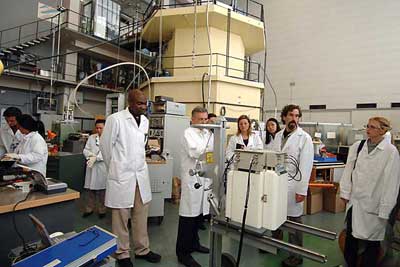
According to the university curricula, students have to enrol in a certain number of practical and theoretical courses that have to be completed with a practical Masters Thesis. The Atomic Institute of the Austrian Universities offers today about 80 theoretical and 10 practical courses in the aforementioned fields. Two courses in particular, those on “Reactor Physics and Kinetics” and on “Reactor Instrumentation and Control” attracted many students as they were trained using the TRIGA Mark II reactor. The students work in a group of 4-5 students. They have to summarise their results and a written test completes the course, which is valued with 3 ECTS. The different exercises included in the “Reactor Physics and Kinetics” course are as follows:
Measurement of thermal neutron flux density in the reactor core
Measurement of epithermal and fast neutron flux density in the reactor core
Determination of the importance function and the void-coefficient
Determination of neutron absorption cross section according to the danger coefficient method
Measurement of the reactor period
Radiation protection around a research reactor
Critical experiments
Control rod calibration and determination of core excess reactivity
Sub-critical safety rod calibration
Determination of the reactivity value of uranium fuel and graphite elements in different core positions
Reactor power calibration and determination of the temperature coefficient of the reactivity
Demonstration of a reactor pulse with different reactivity insertion
The exercises in the “Reactor Instrumentation and Control” course are as follows:
Introduction to typical reactor instrumentation
Reactor safety principles
Calibration of nuclear channels
Measurement of control rod drop times
Neutron flux measurement with compensated ionisation chambers
Fission chambers
Self-powered neutron detectors
Simulator program for PWR
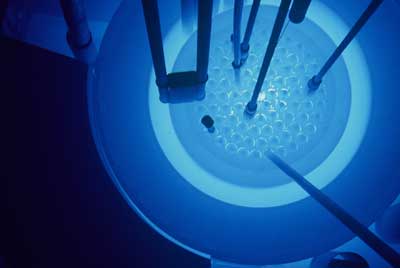
Austria’s strong anti-nuclear policy and the Chernobyl accident reduced the number of MS and PHD students in the nuclear field up to about 1995. Since the mid-90s, the number of students in nuclear technology has once again increased due to two facts:
Increased cooperation with the IAEA
The decommissioning of the 10 MW ASTRA reactor at Seibersdorf, in July 1999
During that period bilateral cooperation with the Czech Republic and the Slovak Republic increased at university level thanks to student exchange programmes and student visits. This will be important later within the context of trans-national cooperation and knowledge exchange.
Since the mid-90s, the Atomic Institute has also been heavily involved in public discussions on Eastern European VVER NPP’s as the Austrian Government created a “Nuclear Forum” in support of its anti-nuclear policy towards neighbouring countries. The Atomic Institute remained a scientific and technical centre of nuclear competence that was strongly ignored by the Austrian media but highly appreciated as a discussion partner for the New EU Member States.
The strong ties between the Atomic Institute and the IAEA are reflected in many cooperative activities, especially in the development of soft and hardware programmes related to safeguards and security instrument development. In many projects the IAEA received high quality academic work and the students were supported financially by the IAEA. Some of the students were later employed by the IAEA due to their excellent scientific and technical knowledge.
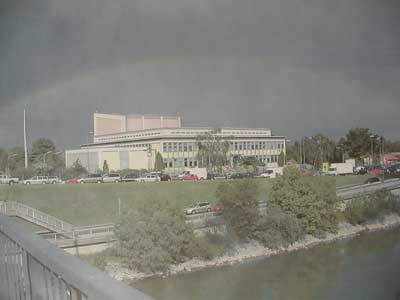
2. International Activities
As the largest international initiative in the field of nuclear education the Atomic Institute took part in the ENEN and NEPTUNO projects, producing an extensive catalogue of all nuclear educational activities at European universities. This document remains today a very valuable document for the follow-up projects.
These cooperative ventures with other European universities initiated and resulted, typically, in the creation of an international course offered jointly by four universities (Bratislava, Budapest, Prague and Vienna) called the Eugene Wigner Course, which has been on offer to students since 2005. The 15 students and young professionals enrolled in the course rotate in groups of 5 between 4 universities. They carry out practical experiments at 3 different research reactors. The course is also credited according to the Bologna agreement by the home universities of the students with 3 ECTS.
Another co-operative venture was started in 2007 with the signing of a contract with the Dalton Institute/University of Manchester. Within the Nuclear Technological Education Centre (NTEC) two groups with maximum 6 students spend a week of practical training in reactor physics and kinetics and in reactor instrumentation and control with the TRIGA reactor of the Atomic Institute. In addition to this training programme, another UK group with participants from the Royal Navy and Rolls-Royce takes part annually in a practical training course at the Atomic Institute.
In addition, for a few years now the Atomic Institute also cooperates with the TU Bratislava in the Slovak Republic in the retraining of staff members of the Bohunice and Mochovce NPPs. Groups of 4 staff members carry out selected experiments from the aforementioned course list, which they carry out over 3 days. Selected Powerpoint presentations on subjects of interest are included.
Another important international co-operative venture is the participation of the Atomic Institute in an EU project called Integrated Infrastructure Initiative for Material Testing Reactors Innovations (MTR+I3), which focuses on preparing for the operation and utilisation of the Jules Horowitz Reactor (JHR). The Atomic Institute has taken over the Work Package Leadership 2 training programme for reactor staff, in cooperation with Belgium, the Czech Republic, France, Greece and Portugal. The programme is divided into three tasks which deals with:
Defining target groups for training and needs in the MTR field and potential candidates each year
Training in a variety of nuclear fields (academic and practical) with such training bodies as ENEN, NEPTUNO, and under the Eugene Wigner course (multinational training course involving Austria, the Czech Republic, Hungary and the Slovak Republic that is supported also by the IAEA)
Define training programmes adapted to the particular needs of the various target groups. Integration of MTR programmes in the European training programmes. Training programmes can be completed at two complementary sites and new modules dedicated to MTR within existing programmes are also offered in order to attract young people to the MTR field
3. Conclusions
Although the Atomic Institute operates within a strictly anti-nuclear environment that is supported by politically motivated and continuously negative media information, the Atomic Institute manages nonetheless to carry out its international programmes successfully. Indeed, these programmes have even increased significantly over the past decade. Both the local students and foreign users appreciate the possibility of having hands-on training at a research reactor – something that is not available in many countries. Located in the heart of Europe and being the closest nuclear facility to the IAEA, the Atomic Institute plays an important role in nuclear knowledge management, education and training. In addition the Atomic Institute also helps to improve international relations in the nuclear field by active co-operation even though it must work within in nuclear-hostile environment.
http://www.euronuclear.org/e-news/e-news-24/fast-track.htm

The law prohibiting the building new reactors in Sweden will be changed to allow the replacement of the currently operating reactors with new ones. The power industry has declared that, to start with, Oskarshanm 1 and Ringhals 1 would be replaced. Meanwhile, Finland is also building a new reactor, Olkiluoto 3. The project has been delayed for several years and the cost has doubled, mainly because of problems with the construction.
Today, the possibility exists of housing in existing reactor buildings a new improved reactor, the High Pressure Boiling Water Reactor (HP-BWR). This concept was first expounded in ENS NEWS (see references below) and at ENS conferences, namely ENC2007 and TOPSAFE 2008. The HP-BWR is safer, more environmentally-friendly and costs less to build than older reactor types. This new design is based on operating experience gained during half a century in Sweden and internationally. This reactor’s power output could almost double that of existing types and the construction costs substantially reduced. A new HP-BWR could be operational by 2020.
Ten years ago, the Barsebäck 1 plant, in Sweden, was closed. Since then, radiation in the reactor vessel and its surroundings has been greatly reduced. Several components have been dismantled and removed, but the buildings are still intact. All this facilitates a possible change-over to the installation of an HP-BWR in the same building. Today, Italy and France are building at least four new reactors and others are being built elsewhere in Europe, the US and Asia. Within this context, perhaps Swedes (especially those living in the Malmö area) and Danes (especially those living in the Copenhagen area) might now accept that the operation of a safer and more environmentally-friendly reactor would be a good thing.
Frigyes Reisch
Stockholm, Sweden
References in previous editions of ENS NEWS:
2007 October
Concept of a Future High Pressure - Boiling Water Reactor, HP-BWR
http://www.euronuclear.org/e-news/e-news-18/HP-BWR.htm
2008 July
Concept of a Future High Pressure - Boiling Water Reactor, HP-BWR
http://www.euronuclear.org/e-news/e-news-21/concept-of-the-future.htm
http://www.euronuclear.org/e-news/e-news-24/chernobyl.htm

The French specialist publication Revue Générale Nucléaire has written a review of a recently published book on the facts, fiction and controversy surrounding the Chernobyl accident and on the impact that it had on French public consciousness and the media. Its analysis, unlike that favoured by the majority of books written on the subject, is free of preconceived ideas and ideological anti-nuclear bias. I translated the Revue Générale du Nucléaire text so that ENS NEWS could read about the book, draw their own coclusions and, if they are interested, get a copy of the publication. And here it is…..
Mark O’Donovan.
What do the majority of French people remember about the radioactive fall-out from the Chernobyl accident that reached France? First of all is the memory of how the authorities attempted to hide from them the truth that a “radioactive cloud” was passing overhead by claiming it had “not crossed the border.” Secondly, is the resultant epidemic of thyroid cancers that hit France, an opinion that was shared by a majority of GPs.

Do these conclusions, however, reflect reality or are they simply an expression of preconceived ideas? In his book entitled Chernobyl, a “cloud” passes by...: Facts and controversy Bernard Lerouge, who witnessed first hand the hard work done by his former colleagues at the IPSN (the Institut de Protection et de Sûreté Nucléaire - France’s Institute for Protection and Nuclear Safety) during the crisis of April and May 1986, looks back at these events. It is the first time that a book on the subject does not reflect the views of a hard-bitten anti-nuclear campaigner. The main strength of his book, which was written with the help of Pierre Schmidt, the former Director of the Superphoenix and Professor Yvon Grall, former Head of the Nuclear Medicine at the Lariboisière Hospital, is above all the serious historical research that went into writing it. That research is based on numerous documents and personal accounts that have been recorded. The research was as dispassionate as possible, but was not void of either critical analysis or humour.
It is very instructive to be reminded, in the first part of the book, of how the reactions of experts and the media evolved, day by day, in the aftermath of an event that was as unique as it was unexpected. When the cloud first reached the French Riviera, on the evening of 30 April, French citizens had already made plans to make the most of a four-day holiday period. The result was administrative and political inertia. Senior journalists were away. Monaco’s marine ecology laboratory detected and quantified initial levels of contaminated air. The SCPRI (France’s “National Centre for the Protection against Ionising Radiation”) confirmed at midnight an increased level of radioactivity in the air and the following day announced that this had spread to the rest of the country.
But the announcements made on national radio on 1 May and in the press on 2 May prove that news of the event had not been hidden from the public, a fact which is confirmed by the following newspaper headlines: France is also affected (Le Figaro), Radioactive clouds above France (France-Soir). Following the results of tests that were carried out day and night on water and milk samples (some results were published on 6 May), Professor Pellerin, Director of the SCPRI, judged that the levels of radioactivity measured were too low to represent a danger to the public and considered, therefore, that no protective measures were required in France.
After the national news bulletin of 10 May on TF1 (one of France’s national public TV channels), during which Professor Pellerin presented an overview of atmospheric developments and showed charts summarising contamination levels in France, gullible journalists came to the conclusion that the initially announced “radioactive particles” were part of a disturbing “radioactive cloud.” They denounced what they claimed was a “radioactive lie.” It is interesting to read how events that happened elsewhere at that time supported this thesis. Because some neighbouring countries had taken precautionary measures but France hadn’t, the government was accused of passivity and the ironic catchphrase “It’s as if the cloud had never crossed our borders!” achieved widespread notoriety.
The second part of the book focuses on the many scientific controversies that were debated at length to determine the degree of radioactive fall-out and the associated health risks. The issues discussed included food safety standards, soil contamination (initially underestimated, this issue helped give media notoriety to an association called CRIIRAD), food contamination, absorbed dosage levels and the effects of low-level radiation (a key question that continues to be debated today).
The appearance in 1990 of a series of thyroid cancer cases in children from the ex- Soviet Union revived the debate over the possible consequences of Chernobyl in our country. In 2001 and 2002, more than 500 sick people filed complaints against the state, which was accused of having failed to put any precautionary measures in place in 1986. It is true that thyroid cancer cases did increase in our country, but medical experts emphasised that the phenomenon involved adults not children (epidemiological studies in the Champagne, Ardennes and Franche-Comté region illustrated this fact), a fact that was also observed in other countries unaffected by the radioactive cloud. And the cases weren’t related to Chernobyl. The voice of the experts was barely heard. The communications strategy was hardly brilliant, everyone accepts that, but wasn’t Professor Pellerin basically right after all?
The third part of the book considers the reaction of the media and analyses it critically. Fearing that any underestimating of the health consequences of the accident might be deemed scandalous the media – sadly - chose to highlight the most pessimistic estimates put forward by the anti-nuclear lobby, whose voice was, a priori, considered more credible. It became politically correct to fear radiation, whatever the level of intensity, while ignoring that radioactivity is present everywhere in nature and creates its own reference levels for assessing how harmful it is.
Television documentaries, which were more often than not biased, manipulated public opinion by not featuring the opinions of the competent scientific community. How can television channels give a virtual monopoly of expression on the subject to people (whether of a scientific background or not) who have never studied biology or medicine? Clearly, the media does not feel at home with science and is not likely to help it find its rightful place in our society. Why is this? This is what the final part of the book explores.
In conclusion, this well-researched work, with its numerous scientific annexes, will fascinate all those who are interested in knowing the real truth. Its general appreciation of the subject will also interest a wider public.
Biographical details:
Bernard Lerouge is a former physician who specialised in nuclear reactors and was working at the CEA (Commissariat à l’Energie Atomique) in 1986. He also worked on providing advice to Eastern European countries on matters regarding nuclear safety.
Professor Yvon Grall is the former Head of Nuclear Medicine at the Lariboisière Hospital, where he worked very closely with the Radio-toxicological Research Centre and France’s National Academy of Medicine.
Pierre Schmidt is the former Director of the Creys-Melville nuclear power plant (aka Superphénix), which is located in a region affected by the radioactive fall-out in the Chernobyl “cloud.”
http://www.euronuclear.org/e-news/e-news-24/sne-news.htm

SNE news |
A new Governing Board of the Spanish Nuclear Society (SNE) was elected at the recent General Assembly of the society’s members. The incoming President, José Emeterio Gutiérrez Elso, assisted by his Board members, as well as by Lola Morales Dorado (Vice President) and José Luis Elviro Peña (General Secretary), will have as his mission to develop the SNE’s structure and implement the activity changes that were recently elaborated in the SNE Strategic Plan.
The SNE held its Annual Meeting, entitled Operating Experiences of the Spanish Nuclear Power Plants in 2008 on 25 February 2009. Representatives of electricity generating companies, their suppliers and nuclear power plants presented important data highlighting operating issues last year. A special session was devoted to an analysis of the influencing factors that are the key to determining the future development of projects within the nuclear sector. In this occasion, an analysis was made of the economic factors that influence the development of new nuclear projects within the present economical situation.
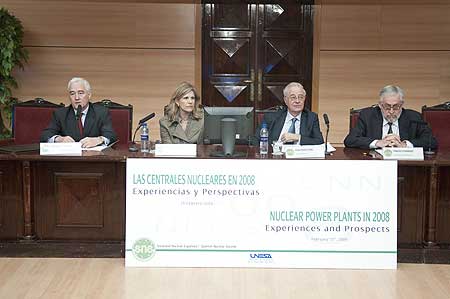
Nuclear España, SNE’s magazine will publish in April its Special Annual Issue, which will feature the experiences and performance figures of all Spanish NPPs in 2008. This bilingual (Spanish-English) issue also features production figures and a report on the main activities carried out during 2008.
The European Nuclear Young Generation Forum (enygf09) will take place in Córdoba, in the South of Spain, from 19 - 23 May 2009. This Forum will gather together nuclear science and technology young professionals and students from all over Europe. The main aims of the Forum are to train and to encourage new leaders for the European nuclear sector and to create a platform for career development and networking among the young people.
The Spanish association Jóvenes Nucleares is organising the event in collaboration with the European Nuclear Society (ENS) and the OECD’s Nuclear Energy Agency (NEA). The conference’s technical programme combines discussion of real issues relevant to nuclear energy development with technical visits to reference centers and debates at which all delegates can participate. There is also a cultural programme to enable participants to enjoy the history and beauty of Cordoba. For more information go to: www.enygf09.org
The European Nuclear Conference (ENC 2010) will take place in Barcelona from 30 May – 3 June 2010. It will be a unique networking event for scientists, nuclear industry representatives and policy- makers, who will have the chance to discuss the ideas and innovations that will drive the technological developments of tomorrow.
The European Nuclear Conference is known for the high standard of papers presented. Key themes at ENC 2010 will include state-of-the-art research and development in areas such as new reactor technologies; socio-economic, political and ethical considerations; education and training and medical applications.
SNE is collaborating actively in the organisation of this event and will contribute its considerable experience of organising its Annual Meeting.
The 35th Annual Meeting of the SNE will be held in Seville from 28 - 30 of October of 2009. The Technical Committee has launched its call for papers, which will close 30 April. The final papers must be submitted prior to 15 July. Special mentions will be given at the closing session to selected papers that will receive a diploma. Thematic areas, rules for presentation and other information can be obtained from the dedicated web site at: www.sne.org
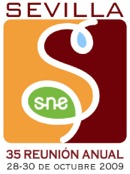
Three new issues of Nuclear España, were published during last quarter: The Spanish Nuclear Industry over the World, Electric Energy in Spain and The Uranium Market. They include articles about the issue’s front page topic, as well as interviews of important personalities and news about the nuclear sector. The January issue The Spanish Nuclear Industry over the World also includes an English translation of the articles and the interview.
The Nuclear España Best Article Prize has been awarded this year to a paper entitled Gestión de vida útil de activos nucleares (Lifetime management of nuclear waste), René A. Fernández, from Nuclenor. Two runner-up prizes were awarded for the following papers: Investigación sobre fenómenos difusivos en combustible (Investigation into various fuel phenomena), written by Luis Enrique Herranz, María Teresa del Barrio, Francisco Feria and Isabel Vallejo, from Ciemat, and El gran acelerador de hadrones (LHC) y la búsqueda de la partícula divina (The Large Hadron Collider and the Search for the Holy Particle), by Guillermo Sánchez, from Enusa.
The Commission also awarded, as was the case the previous year, an “Honorific Mention” to the magazine for its “distinguished technical quality and presentation.” This award was attributed jointly to the two issues: Nuclear Security and Dismantling Spanish Experience.
http://www.euronuclear.org/e-news/e-news-24/italy.htm

One of the objectives of the ENS Young Generation Network is the exchange of knowledge between the older and younger generation. In Italy there is a big generation gap between these two generations, largely due to more than 20 years of nuclear phase-out policy. The actual Italian Young Generation is very motivated and ready to affirm that it is not true that all the national technical background in the nuclear field is completely lost. This paper analyses the past and present nuclear situation in Italy with a focus on the industrial sector that is still lively with Ansaldo Nucleare, a company that has been working mainly abroad in these 20 years and that recently hired a number of young professionals. Ansaldo Nucleare, a subsidiary of FINMECCANICA Group company Ansaldo Energia, is today very well placed in the highly competitive international nuclear market and it can lead industrial companies to a significant contribution to Nuclear Power Plant construction in Italy as well as abroad in the next future. Ansaldo had an important role also in the past due to a strong industrial background.
The Italian scientist Enrico Fermi was a pioneer for the development of nuclear energy leading to the first artificial, self-sustaining, nuclear chain reaction (Chicago Pile-1) initiated on December 2, 1942.
After the Second World War, Italy started an ambitious program of construction of Nuclear Power Plants (NPPs), facilities and research reactors reaching a high level of expertise. In 1965 Italy ranked third for nuclear installed capacity after USA and UK.
In 1958 the construction of the first civil British Magnox reactor started in Latina. The following year construction of the first General Electric boiling water reactor commenced for Garigliano NPP. In 1961, the first Westinghouse pressurized water reactor was built for Trino Vercellese Site. The 860 MWe Caorso NPP started commercial operation in 1978.
In Italy 4 Nuclear Power Plants were operating between 1963 and 1987 and Ansaldo Nucleare contribution was substantial.
In 1972 Ansaldo started to build a 40 MWe prototype reactor, with heavy water moderation and light water cooling, called CIRENE, that was finished, tested, but never operated.
In 1973 ENEL took a 33% share of the Super Phenix 1,200 MW fast neutron breeder reactor being built at Creys-Malville in France as a French-Italian-German joint venture. The plant was closed in 1998. Ansaldo role on the commissioning was relevant and today Ansaldo personel are still working at Creys-Malville for the decommissioning of the plant.
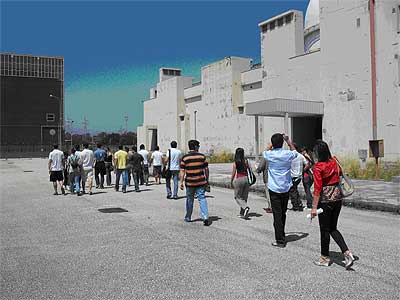
Figure 1: YG visit to Latina NPP and CIRENE NPP for University students
Following a referendum in November 1987, after the Chernobyl accident, the Italian nuclear program was suddenly stopped as a unique worldwide case. The phase out involved the operating plants, two new almost complete nuclear BWR plants (Montalto di Castro 1 & 2) and the PUN (Progetto Unificato Nucleare) reference design for the construction of six PWRs plants. ENEA (formerly CNEN) also closed various fuel cycle facilities, including a fuel fabrication plant at Bosco Marengo.
In 1989 Ansaldo Nucleare became an independent company within the FINMECCANICA group gathering the experts coming from the two companies Ansaldo Impianti SpA and NIRA SpA (Nucleare Italiana Reattori Avanzati).
Ansaldo Impianti SpA (1986) was previously called AMN SpA (Ansaldo Meccanico Nucleare); AMN was created in 1963 within IRI/FINMECCANICA group for National and International nuclear activities.
NIRA (1972) was involved in advanced reactor projects such as Superphenix-FBR, Cirene- BHWR, PEC-Italian Prototype of FBR.
In 1999 Ansaldo Nucleare became a Division of Ansaldo Energia SpA a company within the FINMECCANICA group.
In 2005 Ansaldo Nucleare SpA became a FINMECCANICA company controlled by Ansaldo Energia SpA.
Inspite of its previously high level ofactivity and expertise, Italy remained largely inactive in nuclear energy within the country while working very actively in foreign countries.
In 1999 SOGIN (Societa Gestione Impianti Nucleari) was set up as a state-owned enterprise to take over all Enel's and ENEA's nuclear assets. It was set to take responsibility for all nuclear wastes and for the decommissioning of all NPPs and Facilities. Ansaldo Nucleare provided support for these important and demanding tasks in the country.

Figure 2: Actual logo of Ansaldo Nucleare SpA
www.ansaldonucleare.it
Ansaldo Nucleare has mainly operated abroad in the past twenty years, achieving significant successes.
An example of such a success is the construction of the two units Cernavoda 1 & 2 in Romania a world class performing NPP built in partnership with the Canadian AECL (Atomic Energy of Canada Ltd.). The owner and operator is the Romanian nuclear state utility SNN (Societatea Nationala Nuclearelectrica). Canada’s CANDU (CANada Deuterium Uranium) technology has contributed to Romania’s healthy nuclear industry, and has proven to be an important economic asset for the country. Nuclear power now accounts for about 20 per cent of Romania’s energy supply and significantly reduces its dependency on other energy resources from outside of Europe.
Ansaldo Nucleare has also made a substantial contribution to the development of passive plant technology, as licensee and partner to US company Westinghouse Electric Company, now a group company of Toshiba Corporation.
It contributed to the design of new concept passive systems and main plant components that led to obtaining Design Certification for the AP600 system and later also for the AP1000.
The AP1000 is the only Generation III+ Advanced Light Water Reactor with improved economics and safety aspects to receive Design Certification from the U.S. Nuclear Regulatory Commission (NRC).
Having received Design Certification, the AP1000 has the highest degree of design completion and its readiness for implementation; for this reason several U.S. utilities have selected the AP1000 design in their applications to the U.S. NRC for combined construction and operating licenses. Among the four AP1000s under construction in China the first unit is scheduled to be online by November 2013. Ansaldo Nucleare in a joint venture with Mangiarotti Nuclear signed an important contract with Westinghouse Electric Co. to design and supply innovative components for the first unit of the new generation power plant to be built at the Sanmen site.
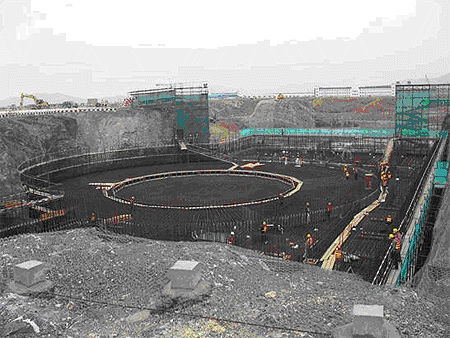
Figure 3: construction of the first AP1000 at Sanmen NPP site in China
Today, Italy is the only G8 country without operating nuclear reactors. Instead, it relies upon imports of nuclear electricity from its neighbours. Italy, which has a few domestic energy resources, is the world's largest electricity importer. Electricity prices are therefore higher than the European average and the country is heavily dependent upon oil, gas and on imports.
In Italy there is an increasing political and public support for nuclear energy confirming the wind of “nuclear renaissance”, that is evident in the entire world. After more than 20 years, the actual new third generation of advanced nuclear power plants is considered important to generate electricity that is safe, plentiful, economical and clean from greenhouse gases. An increasing part of the population now believe that nuclear energy can be beneficial to achieve security of supply with a new and diverse energy mix.
The actual Italian government is interested to start building new nuclear power plants, to reduce the country's great dependence on oil, gas and imported power. It will work towards having 25% of its electricity from nuclear power by 2030, which will require 8 to 10 large new reactors by then. The government introduced a package of nuclear legislation, better suited for possible new nuclear constructions.
A public opinion poll in July 2008 found that 54% supported nuclear power in Italy while 36% opposed it; 83% were opposed to Italy building new nuclear power plants for itself in neighbouring countries, while 11% thought it was a good idea.
Electrical utilities companies operating in Italy are demonstrating their nuclear expertise abroad. The first Italian utility company ENEL is the majority owner of Slovakian utility Slovenske Elektrarne (SE) with five operational commercial reactor units, two Shut down and two Under Construction units. ENEL is involved in the project to complete construction of units three and four of Slovakia’s Mochovce nuclear power plant before 2012. Ansaldo Nucleare provides support for some of the activities connected to the completion of Mochovce 3 & 4.
ENEL is present in France, with the construction, together with EDF, of the EPR in Flamanville. ENEL is present in Spain with Endesa in the operation of 7 Nuclear Power Plants. Other utility companies are very interested in new investments in Italy.
The majority of Italian companies that were active in the early ’80s abandoned the sector long ago. Among the big Groups that kept working in the nuclear field until now only Ansaldo and Techint remain. Ansaldo Nucleare S.p.A. is a subsidiary of FINMECCANICA Group company Ansaldo Energia S.p.A., a major world player in the construction of NPPs. Today, it is in charge of the nuclear sector, with its mission to promote and carry-out ther following:
new nuclear power plants projects,
service activities to operating nuclear plants,
waste treatment and decommissioning of nuclear plants and facilities.
Ansaldo Nucleare is also involved in a number of international R&D (Research and Development) projects on new reactor systems. These include Euratom projects, the IRIS (International Reactor Innovative and Secure) Generation III+ Reactor, a Generation IV design called ELSY (European Lead-cooled System), the EFIT (European Facility for Industrial Transmutation) sub-critical 400 MWth reactor cooled by liquid lead and driven by a proton accelerator.
Within the TECHINT group of engineering and construction companies specialised in large infrastructure, industrial and civil projects there is an Italian subsidiary working in the nuclear field. Outside these two big groups, there are also other companies active in the sector, including:
Mangiarotti Nuclear,
Thales Alenia Spazio and CESI (Centro Elettrotecnico Sperimentale Italiano),
SRS (Servizi di Ricerche e Sviluppo),
IBF
SOGIN (SOcieta Gestione Impianti Nucleari, a state-owned enterprise that can be an industrial partner).
These companies can be the base for a much wider involvement that can be beneficial for the entire Italian industrial system.
According to a recent evaluation, Italian companies can contribute, in the near future, to 75% of a Nuclear Power Plant (NPP) construction.
It is therefore essential to start investing now in human resources and equipment, in order to compete abroad and be ready for the national market.
Nuclear energy is beneficial as an important energy source and for an overall economical and technological growth. Nuclear technology is still relatively young and it has a large potential for improvements and breakthroughs for power and non-power applications: for this reason it cannot be abandoned as our country seems to have done in the past 20 years. A reconsideration of the nuclear option to provide a more balanced energy mix and to decrease the energy dependence from abroad is today a reality in Italy.
An increasing number of young professionals have been hired especially in the industrial sector; Ansaldo Nucleare company has the potential to lead other companies to a significant contribution to Nuclear Power Plant construction in Italy as well as abroad in the next future.
WNA 2009, Nuclear Power in Italy.
IAEA 2003, Country Nuclear Power Profiles
FINMECCANICA Magazine (December 2008)
Power Generation News; Ansaldo Energia publications (January & March 2008)
Westinghouse Electric Co.; AP1000 publications (2008)
Terrani P., Adinolfi R.; Le Capacita’ Produttive Nazionali; Giornata di Studio AIN (November 2008).
Mainardi E.: Impieghi dell'energia nucleare, Delfino Editor (January 2008)
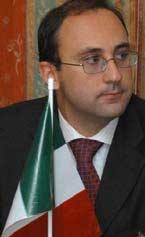 |
Enrico MAINARDI is a Senior Engineer at Ansaldo Nucleare, a Finmeccanica Company. He is Chairman of the Italian Young Generation Network, involved in the work of the IYNC (International Youth Nuclear Congress) and in the ENS YGN (Young Generation Network) Core Group. He has gained considerable experience as the Deputy Secretary General of AIN (the Italian Nuclear Association) and has written a book on nuclear energy [ref.7 www.enricomainardi.it/book.html ]. He has a degree in Nuclear Engineering from the University of Bologna, a PhD in Energetics from the University of Rome "La Sapienza". He has gained experience in several areas of energy and nuclear science and technology in USA, Europe and Eastern countries. |

http://www.euronuclear.org/e-news/e-news-24/yg-reporter-pime09.htm


The PIME 2009 conference was held in Scotland’s capital city of Edinburgh on the 15th to 18th of February 2009. The conference on Public Information Materials Exchange is an annual event that is organised for communicators in the nuclear industry. This year’s conference was attended by over 160 delegates from all over the world and the main topics were public acceptance, communication on nuclear waste and transport and crisis communications. The conference is a great opportunity to network, share knowledge and develop new strategies on issues common to all those working in the nuclear industry.
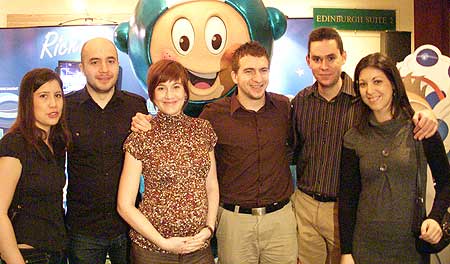
The conference began on Sunday evening with a welcome reception at the Grand Sheraton Hotel where the five nominees for the PIME Award for Communications Excellence were campaigning for votes. This year’s nominees were EDF, the Belgian Nuclear Forum, British Energy, Nuclearelectrica and Urenco.
EDF’s Women of Cattenom NPP campaign used internal and external communications to promote the important contribution that women make to the success of the plant and the wider community through a glamorous photo shoot at locations on the plant. The Belgian Nuclear Forum launched a pro-nuclear advertising campaign in Belgium through the mediums of TV, internet and printed media with the aim of encouraging discussion on nuclear energy and presenting the facts and advantages. British Energy’s campaign focused around forming a strategic partnership between British Energy’s Sizewell B NPP and a local school to promote the opportunities for young people in the nuclear industry. Nuclearelectrica’s “Welcome a tree in your family” campaign involved an army of children planting trees and encouraging them to protect and promote the environment and spread the word to others. Finally Urenco’s Richie Enrichment campaign involved science workshops which promote not only nuclear energy but science in general using a number of supporting materials ranging from web based presentations to audio visual teaching aids. Over 6000 students have successfully completed the workshops in the UK, Netherlands, and the USA and these workshops will soon be launched in Germany.
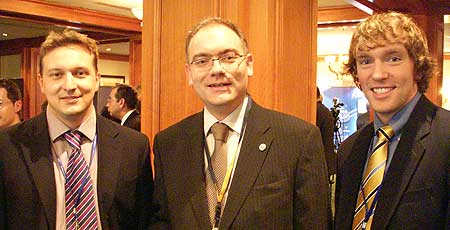
During the evening each nominee was available to answer questions and provide promotional material on their respective campaigns. The star of the evening was Richie Enrichment who made a live appearance and invited delegates to hear more about the campaign and its success by his three glamorous assistants. Delegates could also have their picture taken with the man himself and receive exclusive Richie Enrichment merchandise that I am sure delegates will pass onto their children or even keep themselves.
The conference began on Monday morning with an opening address by Santiago San Antonio, Secretary General of the ENS and Jim Murphy UK Government Minster for Scotland. Mr Murphy commented on the advantages of nuclear power and accused the Scottish National Party (SNP) of having no good reason for banning nuclear power and pointing out that Scotland would loose out on the billions of pounds in investment and employment opportunities that nuclear power presents. Scotland currently has two nuclear power stations both expected to shut down in 15 years. The Scottish Government has made it clear that it will not allow any more new nuclear power stations and plans to rely on a mix of renewable and clean fossil fuel power stations for Scotland’s future energy needs. Mr Murphy’s appearance at the conference was reported by both the local newspapers and TV stations. His comments drew strong opposition from Alex Salmond, Scotland’s First Minister, who described nuclear power as unnecessary for Scotland. Mr Murphy’s address supporting nuclear power was highlighted as an “attack” on the Scottish governments nuclear policy by the media, which shows that nuclear power is still an issue that divides public opinion and emphasises the importance of the PIME conference.
Monday morning continued with a discussion on increasing public acceptance. The results from the discussion showed that the advantages of nuclear power were gaining public support especially amongst men and the older generation. Support generally increases as age and social class increase and that expanding nuclear energy is seen as positive. Scientists and NGO’s are seen as the most trustworthy figures in the nuclear sector and the biggest concern is not the threat of terrorism or radiation but of what to do with nuclear waste. The challenge now for the industry is to increase support among women and the younger generation by not only highlighting the advantages of nuclear power but by building trust and addressing concerns over waste disposal and moving away from a culture of secrecy to a culture of transparency. Saatchi and Saatchi gave an interesting presentation on how advertising can be used to increase public support. Marc Michils, CEO, suggested that the industry needed to talk to and respect all stakeholders and get them involved as emotion leads to action. He highlighted the use of the recent T Mobile advert, showing people dancing in a train station and sharing the experience via their mobile phones. Whilst I cannot see the public dancing round a nuclear power station, I would agree that involving the public would lead to greater support.
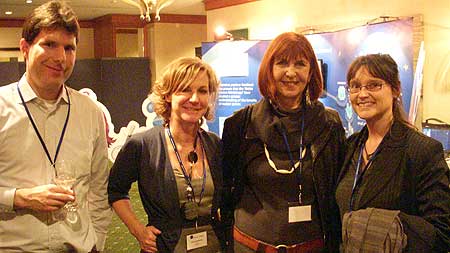
After lunch the Nuclear Industry in Britain was the topic for debate. The conference was told that the first new nuclear power station to be built was expected to be completed in 2018 and that barriers such as costs and public opinion would need to be addressed in order to ensure nuclear power was accepted as an important part of Britain’s future energy mix.
At this year’s PIME conference an innovative interactive breakout session was included. This allowed delegates to put forward ideas on the topics to be discussed and then the remaining delegates could choose which discussion to participate in. Topics included young people and women in the nuclear industry, public acceptance, online debates, finding the right balance between openness and security and how to build trust after a serious incident. The first session I attended was how to address young people and women and the main conclusions were that different genders should not receive different messages on nuclear energy and that better education is needed in schools not just on nuclear energy but the entire energy mix. Teachers need to be given more support from the nuclear industry itself such as the way Urenco uses Richie Enrichment in local schools. It was also recognised that similar initiatives need to be carried out when students are looking for jobs. Companies within the nuclear industry needed to promote the vast number of job opportunities that exist ranging from science and engineering to the vast choice of commercial opportunities as well. The second discussion I participated in was a very interesting debate on balancing openness and security within the industry. It was clear that since the 9/11 terrorist attacks security had increased however the industry needs to become more transparent in order to gain public support and acceptance. It was suggested that new nuclear sites are designed and built with this in mind allowing for public viewing areas and greater local involvement. I think these interactive sessions were a great success providing delegates with the opportunity to actively participate in the conference and gain a greater understanding as well as the opportunity to meet other delegates. I hope this idea will be implemented at more conferences in the future.
Monday evening concluded with the PIME 2009 gala dinner, sponsored by the NIA, which was held at the Signet Library in the heart of Edinburgh’s old town. Delegates enjoyed a memorable evening in the 19th Century surroundings with a three course dinner, traditional Scottish Ceilidh dancing and a live band.
During Tuesday morning the sessions covered the revised INES scale and then an open and honest account on how different crisis were managed. The first was from the incident at the NPP of Krosko where there was a loss of coolant from the primary cooling system; the second was the lessons learned by EDF at Tricastin and finally the IRE incident in Fleurus, Belgium from the Federal Agency for Nuclear Control (FANC). The morning session highlighted that the nuclear industry is becoming more open, learning from previous mistakes and continually trying to improve. It was commented that the nuclear industry needs to use websites and new technologies when it comes to communicating during a crisis and that this will help the industry become more transparent and honest.
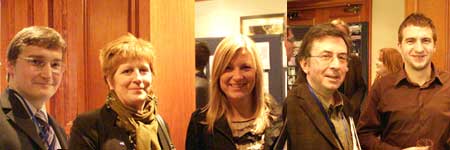
During Tuesday afternoon, three different workshops were held. I attended the workshop on waste management as it seems that this is an important issue when it comes to public support for nuclear power. The workshop discussed the current waste management options in Sweden, Finland and France. Whilst there are options for storing nuclear waste, support is greatest only at the local level and more is needed to be done to ensure greater public support not just at national level but internationally as well. This can be achieved by informing the public of the waste management options and their advantages not only to the local stakeholders but to all members of society.
The closing session of the conference was used to present the PIME Award 2009 for Communication Excellence. The standard this year was very high with a wide variety of campaigns and techniques used. This year the delegates voted for the award to go to the Belgian Nuclear Forum. This was a big vote for the campaign which only began in February and let’s hopes that the campaign is as successful in Belgium as it was at PIME 2009 in promoting the advantages of nuclear power and increasing public support.
This year’s technical tour was hosted by British Energy with a tour around the Torness Nuclear Power Station. Commissioned in 1988 it is located about 30 miles outside of Edinburgh and the power station consists of two advanced gas cooled reactors capable of supplying 1.5 million homes. The tour gave delegates the chance to see the turbine hall, the reactor hall and control room. What impressed me most were the very high safety standards at Torness and that British Energy is continually improving its internal procedures as well as its active involvement with the local community. Thank you to British Energy for hosting a very informative and enjoyable tour.
.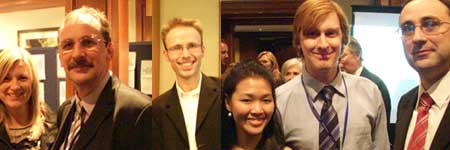
This was my first time attending the PIME conference and it seems to me that ever since the Chernobyl incident, which is still an important factor in the public acceptance of nuclear power, the industry has been very successful in gaining public support in the local areas around nuclear power stations or nuclear facilities. However the challenge for the future is to increase public support through effective communication to all stakeholders not only at a national level but internationally as well. Greater public support will provide the nuclear power industry with the confidence it needs in order to grow and develop into being an important energy supply for future generations. Effective communication and showing a culture of openness and honesty will help achieve this.
On behalf of myself and all the PIME 2009 delegates I would like to thank Urenco for there support of the Young Generation at PIME 2009 and ENS for organising a very successful conference. - Michael Bryant, mkpb@urenco.com
http://www.euronuclear.org/e-news/e-news-24/edinburgh.htm

The first European Nuclear Society Young Generation Network (ENS-YGN) meeting of 2009 was hosted by the UK in Edinburgh, from 13 – 15 February. Approximately 20 people from 11 different countries attended the event, which was organised before and after the Core Committee meeting that took place on 15 February. The programme for the three days included a technical visit to the British Energy AGR station at Torness, a meeting of the ENS-YGN ad-hoc Working Group on the redesign of the YGN website, an informal ENS-YGN dinner at the Novotel Edinburgh Centre Hotel, a formal ENS-YGN dinner at Le Monde, the Core Committee meeting itself and, finally, the PIME welcome cocktail at the Sheraton Grand Hotel & Spa.
The technical visit was extremely eye-opening for everyone, especially for the European members as the AGR is a design that is unique to Britain and will be used to power the second generation of UK nuclear power stations.
After the tour, the European representatives attended an informal dinner where they met with members of the UK YGN Committee and shared stories and experiences.
The meeting on 14 February focused on the redesign of the YGN section of the ENS website because its current structure hasn’t proved to be user-friendly. Improvements discussed included having online delegate forms, updating the front page sections regularly and having a password protected area for internal work. It is hoped that the website will be revamped by the end of the year.
The Core Committee meeting on 15 February involved discussions on a number of issues, including the ENS-YGN workshop at IYNC 2008, ENS meetings that have recently taken place in Brussels, the voting for the 2009 Jan Runermark Award and the location for the next Core Committee meeting.
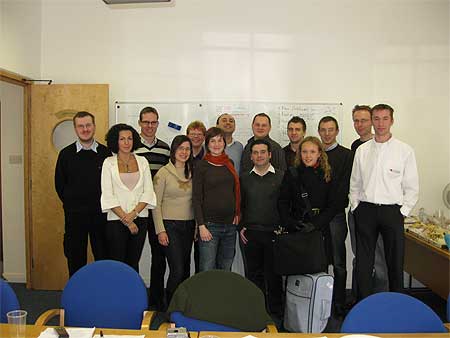
Figure 1: Some of the delegates present at the Core Committee meeting
Both the meetings of 14 February and 15 February were hosted by Halcrow Yolles’ Edinburgh Office. The informal dinner on Friday 13 February and the formal dinner at Le Monde on 14 February were both kindly sponsored by Sellafield Ltd and Halcrow Yolles. The technical visit was organised by a UK representative of the ENS-YGN, Neil Crewdson and his colleague, Priya Shah. A big thank you must go too to British Energy for organising an enlightening technical tour of their AGR.
By Priya Shah
http://www.euronuclear.org/e-news/e-news-24/yg-reporter-rrfm09.htm


RRFM 2009, a four-day international conference dedicated to research reactor fuel management was organized by the European Nuclear Society (www.euronuclear.org) in cooperation with the International Atomic Energy Agency (www.iaea.org) took place in Vienna from 22-25 March 2009. A total of 190 experts from 30 countries gathered in Vienna, Austria, to discuss many important issues, including the development of fuel for research reactors, the conversion of highly-enriched uranium (HEU)to low-enriched uranium LEU), the utilisation of research reactors and their operation, maintenance and decommissioning. |
 |

The entire programme of the conference was divided into the six topics: International Issues, Fuel Development, Fuel Utilisation, Innovative Methods in Research Reactor Physics, the Back-end of the Fuel Cycle, Research Reactor Operation and Maintenance.
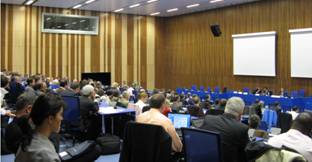
Since a lot of participants were registered for the conference some sessions were carried out simultaneously in parallel. These sessions took place on the 24 March and focused on issues of greatest interest like fuel development, the utilisation of research reactors, innovative methods in research reactor physics and the back-end of the fuel cycle. During the conference a total of 57 presentations were given and then discussed.
In the International Topic session the presentations and discussions focused mainly on the progress of the Jules Horowitz research reactor project; worldwide research reactor coalitions and safety standards for operating reactors.
For the session Fuel Development 15 projects were presented and these generally focused on comparison of HEU with LEU, experimentation, characterisation and improvements of U-Mo fuel. Great stress was also put on the necessity to convert HEU fuel to other fuel that does not pose a risk of global nuclear proliferation.
The Fuel Utilisation session mainly featured presentations about the practical uses of research reactors, their role in life science, material testing, nuclear medicine and applications for environmental and health studies. The shortage of the medical isotope technetium-99m was also discussed in depth and possible solutions were investigated.
The other sessions were shorter in length compared to the aforementioned ones and were orientated towards the validation of various codes for research reactor safety, MCNP simulations, investigation of research reactor aging, decommissioning, the transportation of spent nuclear fuel and final disposal.
Another important part of the conference was the Poster Session, where a total of 23 posters from 16 countries were exhibited. In previous RRFM conferences participants showed great interest in these poster sessions and in order to maintain this success a competition to identify the best RRFM09 poster was announced. First place was shared between two posters and the winners received small gifts during the Closing Ceremony.
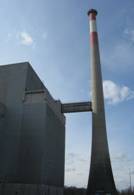 RRFM 2009 concluded with two technical tours during the afternoon of 25 March. Participants could choose between visiting either the TRIGA reactor at the Atominstitut, in Vienna, or the Zwentendorf Nuclear Power Plant. As a Young Reporter, I chose the Zwentendorf NPP since it was a unique chance for me to see the boiling water reactor from close up and to go below the reactor core. This NPP was built at the beginning of the 70’s and, unfortunately, the referendum that was carried out in 1978 in Austria decided that the plant would never produce electricity and so it was immediately shut down. Today, it is a museum showing how nuclear energy partly died in Austria, but it does not mean it will not arise again from museum’s ashes.
RRFM 2009 concluded with two technical tours during the afternoon of 25 March. Participants could choose between visiting either the TRIGA reactor at the Atominstitut, in Vienna, or the Zwentendorf Nuclear Power Plant. As a Young Reporter, I chose the Zwentendorf NPP since it was a unique chance for me to see the boiling water reactor from close up and to go below the reactor core. This NPP was built at the beginning of the 70’s and, unfortunately, the referendum that was carried out in 1978 in Austria decided that the plant would never produce electricity and so it was immediately shut down. Today, it is a museum showing how nuclear energy partly died in Austria, but it does not mean it will not arise again from museum’s ashes.

The conference’s social programme was very well-organised and consisted of a wine & cheese party on 22 March at the Vienna International Centre, an AREVA-sponsored gala dinner at the magnificent Palais Ferstel, on 23 March and the Viennese style RRFM 2009 conference dinner on 24 March. All events were pleasant and relaxed after a hard day’s work at the conference and they allowed participants to socialise in a different and untypical setting.
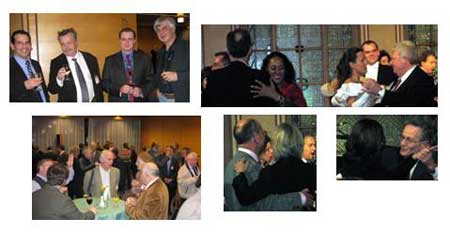
At the end of this report I would like to express my gratitude to European Nuclear Society staff that organised a conference of this dimension without any problem, and for giving me the opportunity to attend RRFM 2009 and share my experiences with other participants. I am also grateful for the financial support of the Czech Nuclear Society and Nuclear Research Institute Řež plc.
By Marija Miletić,
Czech Republic,
mil@ujv.cz ,
Mob: +420 608 246 386
http://www.euronuclear.org/e-news/e-news-24/foratom-workshop.htm

Workshop Theme
Practical Implementation of IAEA Safety Standards on Management System
Dates
23 – 25 June
Location
AREVA NP GmbH facilities, Kaiserleistraße 29, 63067 Offenbach, Germany
Objectives
The objective of the workshop is to promote the IAEA Safety Standards on Management System (GS-R-3, GS-G-3.1 and DS349) and to provide a practical approach of the implementation of an Integrated Management System in existing Management System in nuclear facilities and activities.
Key Issue 1: Implementation of Safety Standards on Management System
Key Issue 2: Practical application of process management
Key Issue 3: Assessment and improvement of Management System
Key Issue 4: Safety Culture and leadership in nuclear industry
Workshop Approach
The workshop will provide a forum for exchanging experiences and information related to the integration of management system elements. The main focus will be on common difficulties, possible solutions and good practices to improve overall performance with regard to safety. It will also address improvement in the Management System and Safety/Organizational Culture in the Operating Organizations. The workshop will seek to exchange practical lessons learned in the establishment of integrated management System. The workshop will consist of a series of leading lectures given by IAEA-FORATOM and other experts, followed by working sessions on specific topics discussing the issues raised and difficulties envisaged.
Participants
The participants should be senior managers and professionals with responsibility for establishment, improvement and assessment of IMS; particularly those involved in any projects transforming QA/QM System into IMS based on the approach described in the IAEA Safety Standards. The participants should come from nuclear power plants, nuclear power companies, regulatory bodies, research institutes, research reactor operating organizations, radwaste companies, fuel cycle facilities and from other organizations dealing with radioactive sources. Participation of supplier organizations (manufacturers, designers, engineering companies, etc) is also desirable. The participants should have experience in the establishment and continual improvement of Management System and Safety/Organizational Culture.
Background
The previous workshop in 2007 on “Implementation of IAEA Safety Standards on Management System” focused on the understanding of the GS-R-3 requirements and to provide information on the transition from traditional QA approach towards the Integrated Management System (IMS) in facilities and activities.
The GS-R-3 integrates all management processes and activities into one coherent system so as to enable the organization to achieve its purpose and mission, such as safety, health, environmental, security, quality and economic management system requirements, whilst maintaining the paramount focus on safety at all nuclear facilities and activities from nuclear power generation to the safe use of radioactive sources.
When developing the new set of IAEA Safety Standards for Management System it was recognized at an early stage that with an integrated approach to Management System it was necessary to include the aspect of culture. With an integrated approach, the aspects of the Management System that define processes and practices need to be combined with people’s values, attitudes and behaviors in order for the organization to fully reach its goals and objectives. The Management System will both influence and be influenced by the overall culture of the organization.
As a result of the revision process the new set of Safety Standards on Management System were approved and were published in September 2006. Since they will introduce a new conceptual approach to Management System it is beneficial to hold a workshop to launch the concepts and to raise understanding and awareness.
Download
http://www.euronuclear.org/e-news/e-news-24/year-of-chemistry.htm

The 63rd General Assembly of the United Nations has adopted a resolution proclaiming 2011 as the International Year of Chemistry, placing UNESCO and the International Union of Pure and Applied Chemistry (IUPAC) at the helm of the event. The year 2011 also marks the 100th anniversary of the awarding of the Nobel Prize for Chemistry to Mme Maria Skłodowska Curie, an event that will also provide an opportunity to celebrate the overall contribution of women to science.
http://www.euronuclear.org/e-news/e-news-24/nucnet-news.htm


Chernobyl Waste Centre Handed Over As Information Campaign Launched27 Apr (NucNet): A turnkey waste treatment centre for solid radioactive waste has been formally handed over at the site of the former Chernobyl nuclear power plant. Germany’s Nukem Technologies said the centre, or ‘industrial complex for radwaste management’ (ICSRM), was formally handed over to Nukem’s customer, the Chernobyl Nuclear Power Plant, on 24 April 2009. Details of ICRIN are on the agency’s website (http://www.iaea.org).
|
E.ON Considers Replacement Unit For Sweden’s Oskarshamn Plant23 Apr (NucNet): The Swedish arm of Germany’s E.ON utility is considering proposals to build a replacement reactor unit at the Oskarshamn nuclear power plant on Sweden’s east coast. The chief executive officer of E.ON Sweden Per Lindell said the company is considering the possibility of replacing the Oskarshamn-1 reactor unit.
|
Access To Nuclear Energy ‘Vital For Global Economy’20 Apr (NucNet): Clean and affordable energy, including access to safe and secure nuclear power, should be a central element of efforts for a sustainable global economy and the future of the planet, Organisation for Economic Co-operation and Development (OECD) secretary-general Angel Gurria has said at a ministerial conference in China. “Nuclear energy has the potential to meet a significant part of future demand while reducing tensions on hydrocarbon markets and alleviating the risk of global climate change,” said Mr Gurria in his keynote speech to the International Ministerial Conference on Nuclear Energy in the 21st Century, which opened today in Beijing. |
http://www.euronuclear.org/e-news/e-news-24/other-conferences.htm

ENS Member Societies and Corporate Members have reduced conference registration fees to all sponsored conferences.
INTERNATIONAL CONFERENCE
MARSEILLE
PALAIS DES CONGRES
7 - 10 JUIN 2009
The first International Conference on Advancements in Nuclear
Instrumentation, Measurement Methods and their Applications ANIMMA is organized by CEA in closed partnership with INSTN, Université de Provence and Belgium nuclear research center SCK-CEN in association with IEEE and ENS organizations.
The conference topics include instrumentation and measurements for :
|
|
ANIMMA offers an outstanding opportunity for scientists, engineers and manufacturers to meet and discuss new ways to address complex problems and find advanced solutions in nuclear instrumentation and measurement sciences and technologies.
Do not miss this important international scientific and technological event.
Conference Web Site : www.animma.com/conference/
E-mail : animma@cea.fr
You can also contact : Pr. Abdallah Lyoussi
Chairman of Organizing Committee
Phone. : +33 442 257 588
International Conference on Nuclear Engineering
12 - 16 July 2009
Sheraton Brussels Hotel, Brussels, Belgium
www.asmeconferences.org/icone17/
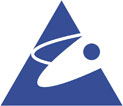
18th International Conference
14 - 17 September 2009
Bled, Slovenia
www.nss.si/bled2009/

13th International Topical Meeting on Nuclear Reactor Thermal Hydraulics
27 September - 3 October 2009
Kanazawa, Japan
Atomic Energy Society of Japan
3-7, Shimbashi 2-chome
Minato-ku
Tokyo 105-0004, Japan
Tel: +81-3-3508-1261
E-mail : atom@aesj.or.jp
www.nureth13.org/
5 - 9 October 2009
Barcelona, Spain
Online registration
12 - 16 October 2009
Buchares, Romania
Nuclear Energy Romanian Association – AREN
65 Polona Street
P.O. Box 22-102
010494 Bucharest -1
ROMANIA
more

15 - 19 November 2009
Washington, DC
United States of America
American Nuclear Society Meetings
Department,
555 North Kensington Avenue, LaGrange Park,
IL 60326, USA
Tel: +1 (708) 352-6611
Fax +1 (708) 352-6464
E-mail meetings@ans.org
www.ans.org
7 - 11 December 2009
Kyoto, Japan
Conference Services Section
Division of Conference and Document Services
Tel: +43 1 2600 21311
Email: official.mail@iaea.org
www.fr09.org

26 to 30 September 2010
Avignon, France
Patricia Hamel-Bloch
SFEN
5 rue des Morillons
F-75015 PARIS
Tel: 33.1.53.58.32.12
Fax: 33.1.53.58.32.11
Email: phamel-bloch@sfen.fr
more

9th International Conference on Tritium Science and Technology
24 - 29 October 2010
Nara, Japan
National Instiute for Fusion Science Safety and Environmental Research
http://www.euronuclear.org/e-news/e-news-24/Member-Societies.htm

Austrian
Nuclear Society |
Belgian
Nuclear Society |
Bulgarian
Nuclear Society |
Croatian
Nuclear Society |
Czech Nuclear Society |
Finnish
Nuclear Society |
French
Nuclear Energy Society (SFEN) |
German
Nuclear Society (KTG) |
Hungarian
Nuclear Society |
The
Israel Nuclear Society |
Italian
Nuclear Association |
Lithuanian
Nuclear Energy Association |
Netherlands Nuclear Society |
The Nuclear Institute |
Nuclear
Society of Russia |
Nuclear
Society of Serbia |
Nuclear
Society of Slovenia |
Polish
Nuclear Society |
Romanian
Nuclear Energy Association (AREN) |
Slovak
Nuclear Society |
Spanish
Nuclear Society |
Swedish
Nuclear Society |
Swiss
Nuclear Society |
http://www.euronuclear.org/e-news/e-news-24/Corporate-Members.htm

Links to ENS Corporate Members
|
http://www.euronuclear.org/e-news/e-news-24/editorial.htm
Mark O’Donovan, Editor-in-Chief
Contributors to this Issue:
Helmut Böck ( Atominstitut, Vienna)
Michael Bryant (YGN, France))
David Bonser (ENS)
David Dalton (NucNet)
Diana Cuervo (Universitat Politécnica de Madrid)
Kirsten Epskamp (ENS)
Corinne Lepage (Modem)
Bernard Lerouge (CEA)
Enrico Mainardi (YGN, Italy)
Marija Miletić (YGN, Czech Republic)
Frigyes Reisch (KTH)
Priya Shah (YGN, UK)
Andrew Teller (Areva)
Realisation:
Marion Brünglinghaus
Rue Belliard 65, BE-1040 Brussels
Phone +32 2 505 30 50 - Fax: +32 2 502 39 02
E-mail: info@euronuclear.org - http://www.euronuclear.org
The ENS News is a quarterly publication, in electronic
form only.
Copyright notice ©2009 European Nuclear Society.
Reproduction is authorised provided that the ENS News is acknowledged as the
source – except where otherwise stated.
![]()
© European Nuclear Society, 2009